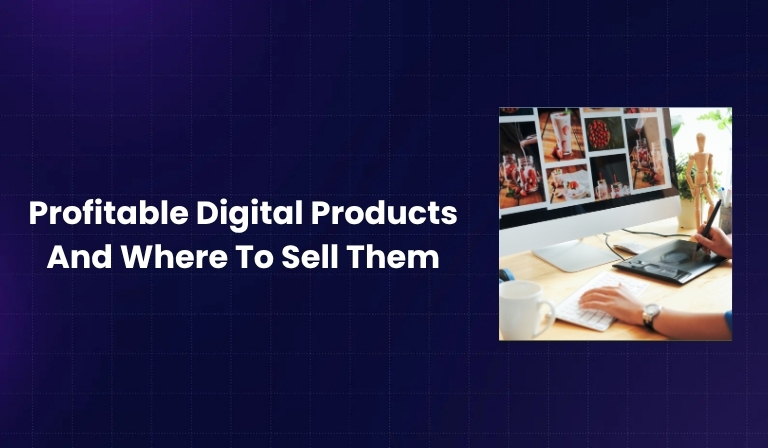Digital products are any goods you can sell online without the need for physical inventory. These can include eBooks, courses, templates, music, or even mobile apps. In 2025, the demand for digital products is higher than ever due to increased internet usage, remote learning, and the growing creator economy.
Selling digital products allows creators, entrepreneurs, and freelancers to generate passive income, scale their business, and reach a global audience with minimal overhead.
Benefits of Selling Digital Products
Selling digital goods comes with several advantages:
- Low Production Cost: Once created, digital products require little to no cost to duplicate and deliver.
- Unlimited Inventory: You can sell the same product to unlimited customers without running out of stock.
- Passive Income Potential: Create once, sell forever—earn income even while you sleep.
- Scalable: You can scale your business globally without warehouses or shipping logistics.
- Eco-Friendly: No packaging, no shipping, no waste.
15 Most Profitable Digital Products to Sell in 2025
1. eBooks and Audiobooks
eBooks are one of the easiest digital products to create and sell. You can write about anything—guides, stories, or how-tos—and publish them on platforms like Amazon Kindle or Gumroad. Audiobooks offer an alternative for those who prefer listening. With rising consumption of audio content, they’re a great add-on to eBooks.
2. Online Courses and Workshops
If you have a skill or expertise, you can turn it into a course. Platforms like Teachable or Udemy let you reach students around the world. Courses can include videos, PDFs, quizzes, and more. You can also host live workshops for more interaction and premium pricing.
3. Digital Planners and Printables
These include calendars, trackers, journals, and productivity sheets. They’re very popular among students, professionals, and planners. Once created, you can sell them unlimited times through platforms like Etsy or your own store. They’re easy to design using tools like Canva or Notion.
4. Templates (Social Media, Resumes, Business, etc.)
Templates save people time and give their work a polished look. You can sell Instagram post designs, resume layouts, or email marketing templates. These are great for entrepreneurs, job seekers, and marketers. Canva and Adobe users often look for pre-designed formats.
5. Graphic Design Assets
These are visual elements like icons, illustrations, patterns, and UI kits. Designers and developers use them in websites, apps, or branding. If you’re a graphic designer, you can earn passive income by uploading assets to Creative Market, Envato, or your own store.
6. Stock Photography and Videos
If you’re a photographer or videographer, stock media can be a steady income source. Businesses and content creators always need quality visuals. You can sell your work on sites like Shutterstock, Adobe Stock, or even bundle them for direct sales.
7. Fonts and Typography Packs
Custom fonts are in high demand among designers and brands. If you can create stylish or unique fonts, you can sell them to logo designers, website builders, or digital artists. Font bundles or typography kits are especially popular in marketplaces like Creative Market.
8. Website Themes and Templates
Themes and templates for platforms like WordPress, Shopify, and Squarespace save businesses time and money. Developers can create clean, user-friendly layouts and sell them at scale. This is a great niche if you have coding or design skills.
9. Software and Mobile Apps
Apps and SaaS tools solve specific problems and can be monetized via subscriptions or one-time sales. From productivity tools to budgeting apps, there’s a large and growing market. Even simple tools can earn well if they target a specific need or niche.
10. Music, Sound Effects, and Audio Tracks
Content creators, filmmakers, and game developers are always looking for original audio. You can compose music, create loops, or record sound effects to sell online. Sites like AudioJungle or Pond5 are great for hosting your audio files.
11. Digital Art and Illustrations
Artists can sell downloadable prints, wallpapers, and custom illustrations to a wide audience. With platforms like Etsy, ArtStation, or even NFTs, digital art has become a popular and profitable category. It allows for both creativity and commercial success.
12. Social Media Content Packs
Pre-made content packs help brands and creators post consistently. These could include caption templates, editable Canva designs, or reels layouts. They’re especially useful for small businesses that lack time or a marketing team.
13. Meditation and Wellness Digital Kits
Wellness products like guided meditations, self-care journals, and affirmation decks are in demand. As people focus more on mental health, these products sell well across platforms like Gumroad or personal wellness websites. They also work well with audio and visual formats.
14. Business & Marketing Toolkits
These include sales funnels, pitch decks, business plan templates, and email copy bundles. Entrepreneurs and startups love ready-to-use business resources. You can package your knowledge into easy-to-edit documents that help others launch or grow.
15. Personal Finance Spreadsheets and Budget Planners
These are great for people looking to manage their money better. Budget trackers, savings plans, and debt repayment spreadsheets are useful and highly searchable. They’re simple to make in Google Sheets or Excel and sell well on platforms like Etsy.
Also Check: Top 16 Best Online Community Platforms In 2025
Where To Sell Digital Products in 2025
Marketplaces
Marketplaces are ready-to-use platforms with built-in audiences:
- Etsy: Great for printables, templates, and planners
- Gumroad: Ideal for creators selling everything from eBooks to music
- Creative Market: A hub for designers selling assets and fonts
- Udemy / Teachable: Perfect for hosting and selling online courses
- Amazon KDP: Best for publishing and selling eBooks
- Google Play / Apple App Store: For mobile apps and games
Your Own Website
Building your own website gives you full control over branding and profits. You can use:
- Shopify: Easy for selling downloadable products
- WooCommerce (WordPress): Highly customizable
- Podia / Kajabi: Great for courses, memberships, and more
Membership Platforms
If you offer regular content, memberships are a smart choice:
- Patreon: Offer exclusive content to paying subscribers
- Substack: Monetize newsletters and writing
- Buy Me a Coffee: Accept donations or sell exclusive digital items
Email and Social Media Direct Sales
Social media platforms and newsletters let you connect directly with your audience:
- Instagram and TikTok Shops: Sell templates or planners directly
- Email Marketing Tools: Promote your digital products through regular updates
Tips for Successfully Selling Digital Products
- Know Your Audience: Create products that solve real problems or meet clear needs.
- Offer Value: Your product should either save time, make money, or entertain.
- Use Great Visuals: High-quality images and mockups help boost trust and conversions.
- Leverage SEO and Content Marketing: Make sure your product is discoverable.
- Offer Samples or Previews: Let people try before they buy.
- Automate Delivery: Use tools to instantly send downloads after purchase.
- Build Trust: Add testimonials, FAQs, and refund policies.
Common Challenges & How To Overcome Them
- Piracy and Theft: Use watermarks, limited downloads, or license keys.
- Standing Out in a Crowded Market: Focus on niche topics and strong branding.
- Pricing Products Right: Research competitors and test different price points.
- Gaining Visibility: Use a mix of SEO, social media, and email marketing.
- Managing Customer Expectations: Set clear product descriptions and policies.
Conclusion
Digital products are a powerful way to generate income online in 2025. Whether you’re selling a simple planner or building a robust app, there’s a huge market waiting. Start with one product idea, choose the right platform to sell, and focus on delivering value.
With consistency and creativity, selling digital products can become your most profitable venture yet.
FAQs
1. What is the most profitable digital product to sell?
Online courses and software products tend to have the highest profit margins due to their pricing and demand.
2. Can I sell digital products without a website?
Yes. You can use platforms like Etsy, Gumroad, or marketplaces like Udemy and Amazon.
3. What tools do I need to create digital products?
Tools like Canva, Adobe Suite, Notion, Audacity, or coding platforms (for apps) can help you create different types of digital products.
4. How do I price digital products?
Research your niche, assess the value you provide, and test different pricing models. Start low and increase as you gain credibility.
5. Is it legal to resell digital products?
Only if you have proper resell rights or licenses. Always check copyright laws and terms before reselling someone else’s work.

